Heat is Watch Black Panther Onlinean inevitable byproduct of work. It's generated when you start a car's engine, go for a brisk walk or anything else that generates friction. Heat is also prevalent in electronics where it can be more difficult to manage and can be detrimental to their continued operation. When it comes to graphics cards there are many ways to manage heat, from passive cooling, to fans and even water. But when these solutions aren't working, your GPU has one more way to beat the heat: thermal throttling.
When your GPU takes on a heavy workload, such as gaming, it generates a load of heat. When your cooling solution can no longer dissipate heat fast enough to keep temperatures within a safe range, your graphics card starts to dump performance to shed heat. The core and memory frequencies begin to drop---along with your framerates---until temperatures drop to a safe operating range. All modern GPUs have this feature in place to protect the electronic components from damage. Unmanaged, thermal throttling can have a big impact on performance. And, while thermal throttling itself doesn't cause any damage, the underlying cause of throttling, heat, can cause damage and shorten the lifespan of your video card.
In order to maintain performance, you need to control heat, but not all graphics cards experience throttling to the same degree, or even at all. There are a variety of scenarios that determine the impact thermal throttling has on your system. Case selection, cooling solution, and airflow are the three main factors to take into consideration.
A small case with no open space traps heat and inhibits airflow, which makes it harder to keep your GPU cool. Choosing a larger, well laid out case can provide more fan mounts and options to optimize airflow. Being able to mount additional fans in your case is especially beneficial if your GPU manufacturer has used a custom cooling solution that dissipates heat into your case instead of directly removing it, like with reference designs.
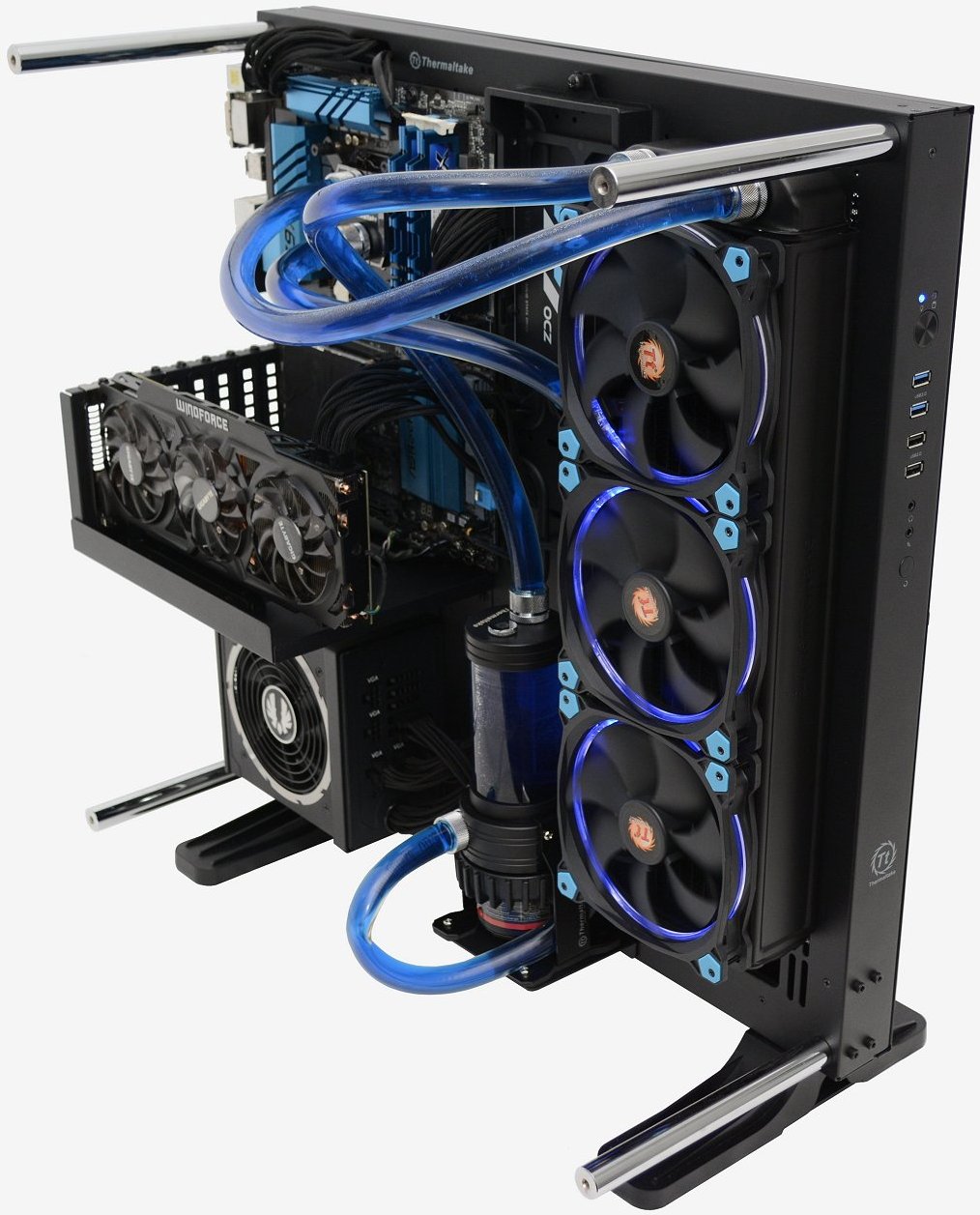
Adding additional fans to the top of your case ensures that heat generated by your GPU is removed from the case efficiently. It also lowers air temperature inside of your case keeping other components, such as your CPU and memory, much cooler.
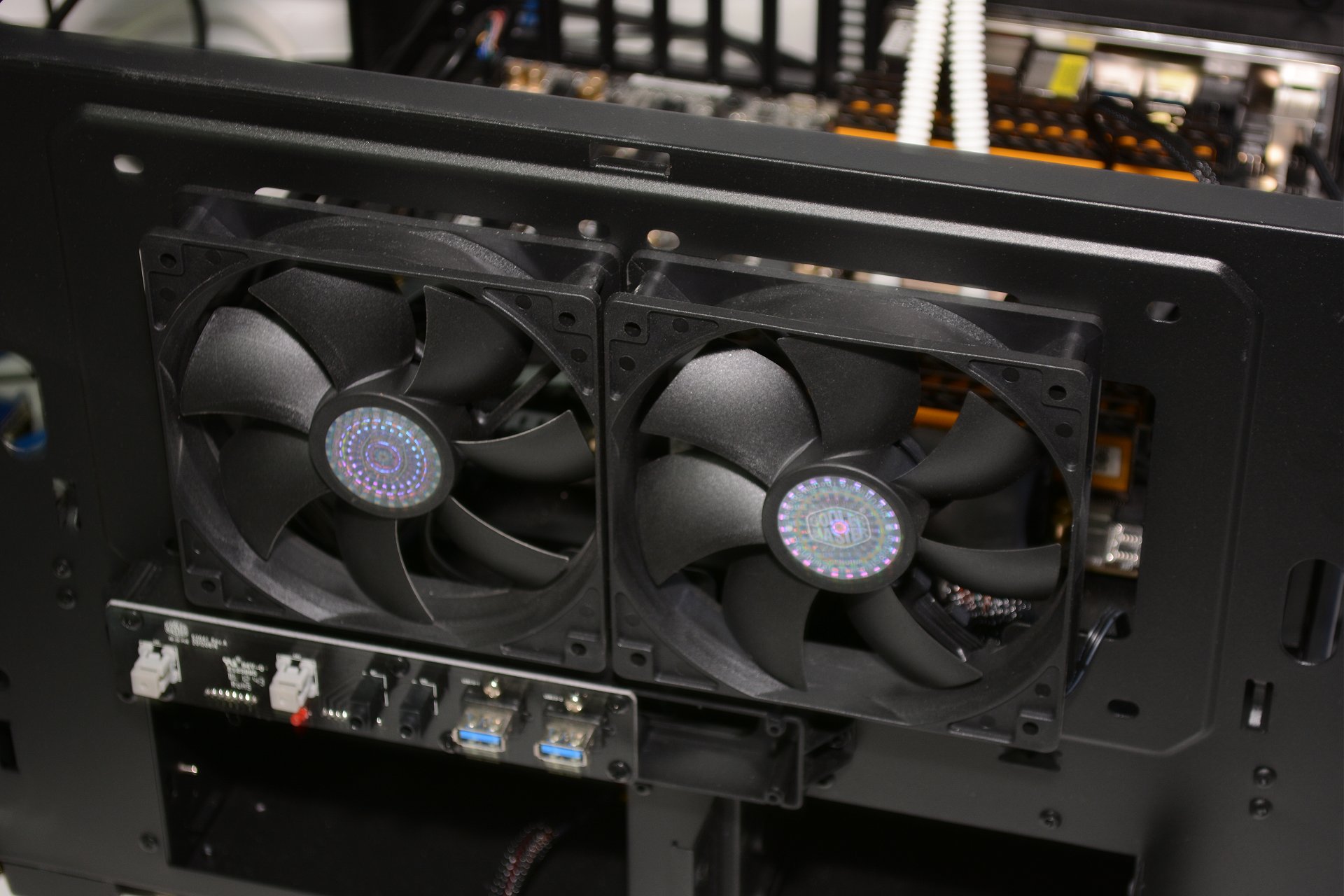
The brand of graphics card you choose may come down to personal preference, but the cooling solution it uses is an important decision. Reference designs---which are blower-type fans---typically use a single fan to keep the card cool. Cool air is drawn through the rear of the graphics card and exhausted out of the end with the connectors. This design is efficient but the single fan holds back performance.
When choosing a graphics card, it's often ideal to pick one with a multi-fan cooling solution. The additional fans---sometimes as many as three---provide enough airflow to significantly reduce or even eliminate throttling. It should be noted that your case needs to provide enough airflow to handle the hot air pumped out by these types of graphics cards as their coolers do not directly remove the heat from the case.
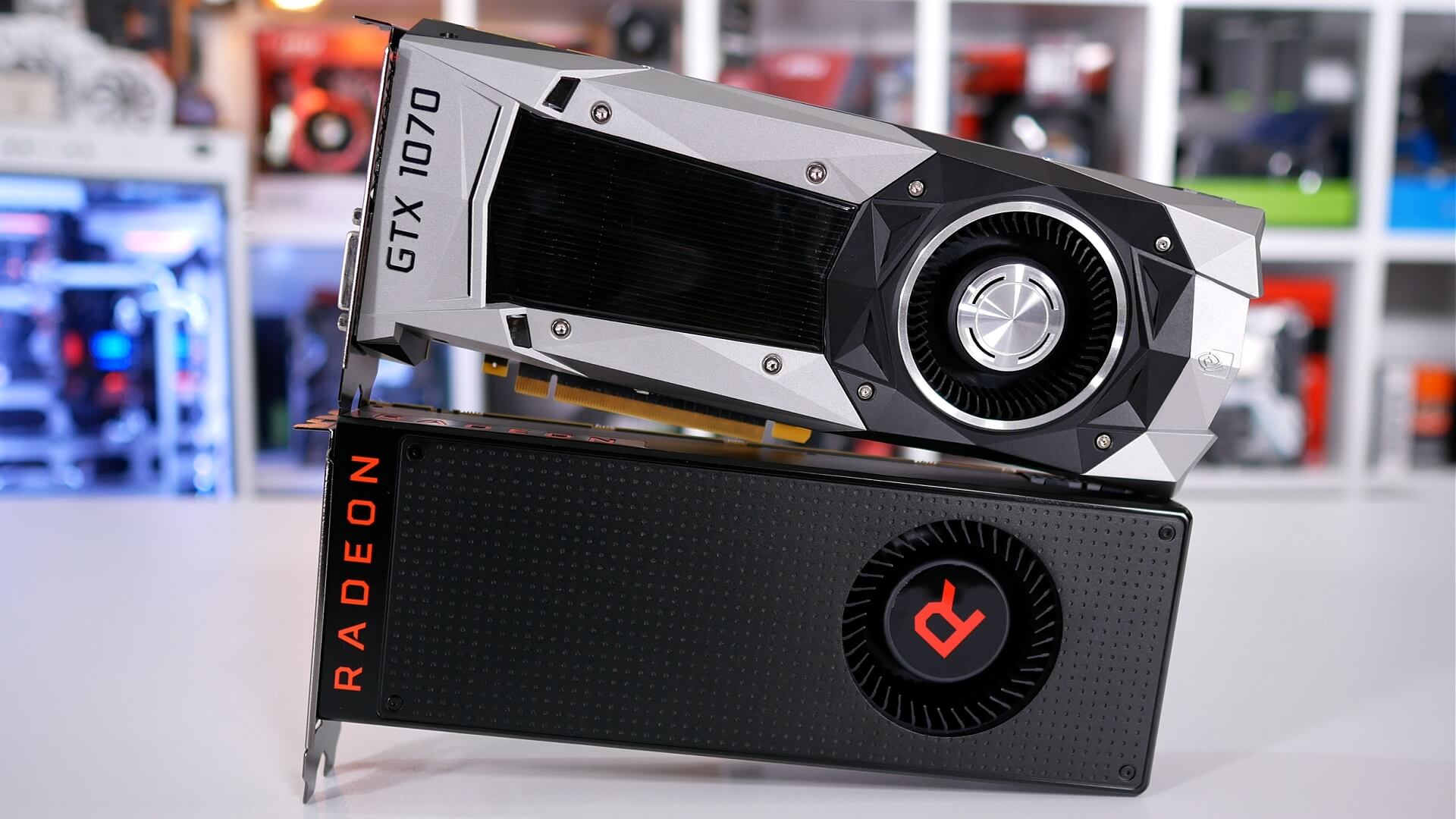
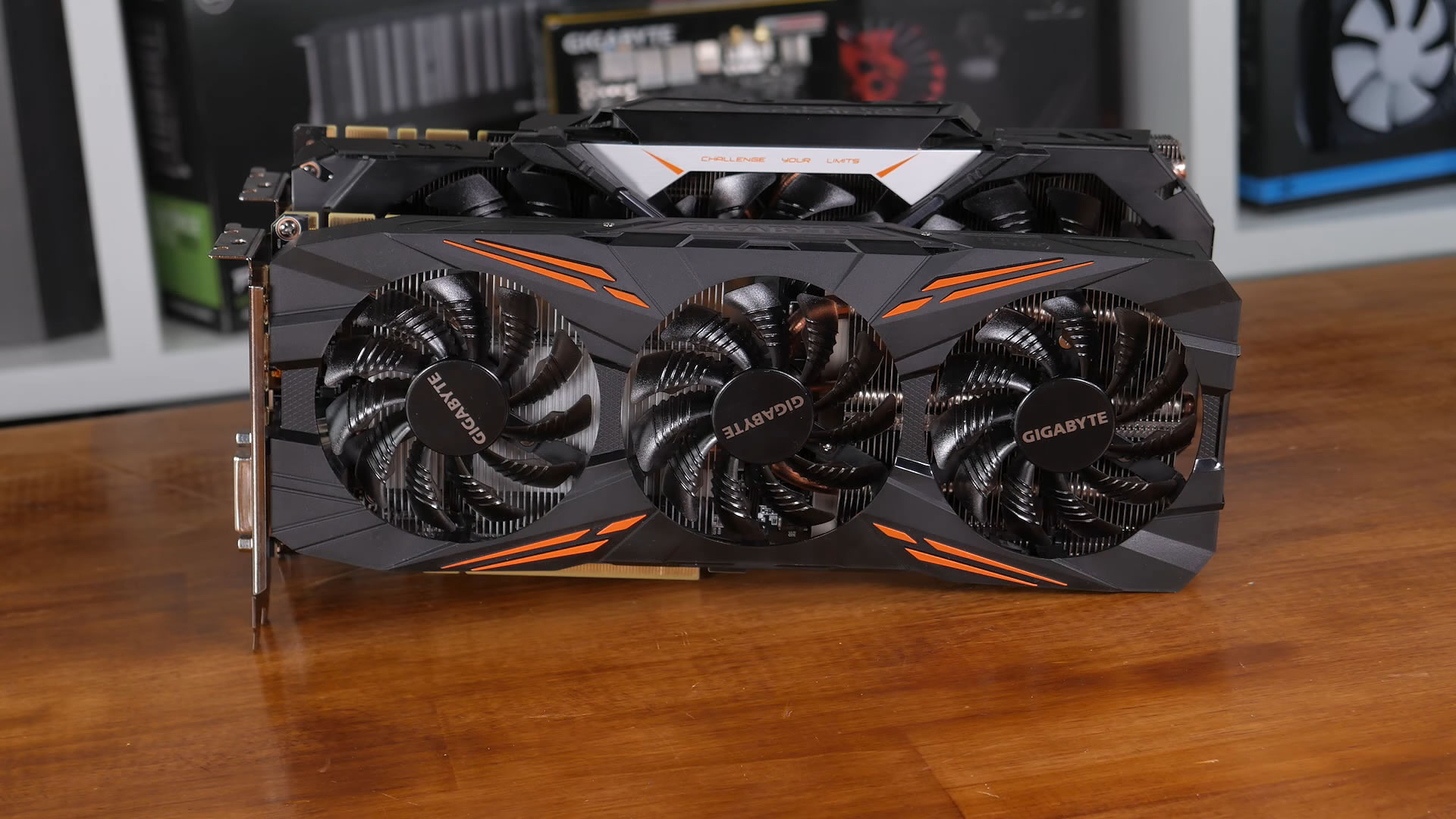
If changing or adding hardware is not an option, you can still reduce temperatures using freely available tools.
With utilities like MSI's Afterburner or EVGA's PrecisionX, a custom fan curve can be configured. By setting the fan curve manually, you can set the fan speed for a given temperature to something a bit more aggressive. From the factory, the fan speeds are optimized to strike a balance between noise and performance. With reference cards, this balance often leans more towards noise suppression and can lead to thermal throttling.
Noise levels will increase, perhaps significantly, but your GPU will be able dissipate heat much faster and maintain performance.
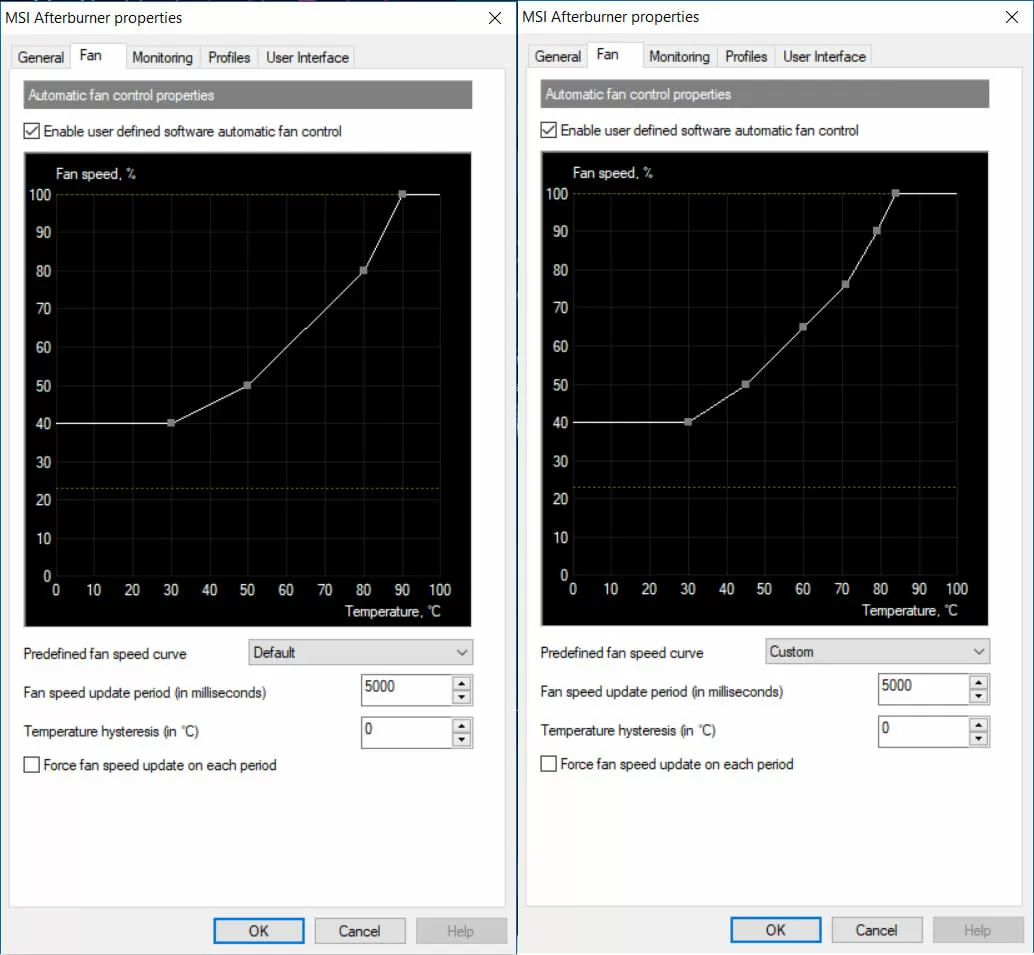
Default Left, Custom Right
If the additional fan noise is too much to handle, there is one more solution to your thermal throttling woes: undervolting.
Sometimes the amount of voltage your card uses is set higher than it needs to be to allow your card to function correctly. Running at a higher voltage generates more heat even if the clock and memory speed remain the same. Undervolting your graphics card by even a small amount can lower temperatures enough to reduce or even eliminate thermal throttling. However, this isn't a guaranteed solution and can cause stability issues. For most users, we recommend a combination of better cooling in conjunction with fan-curve adjustments.
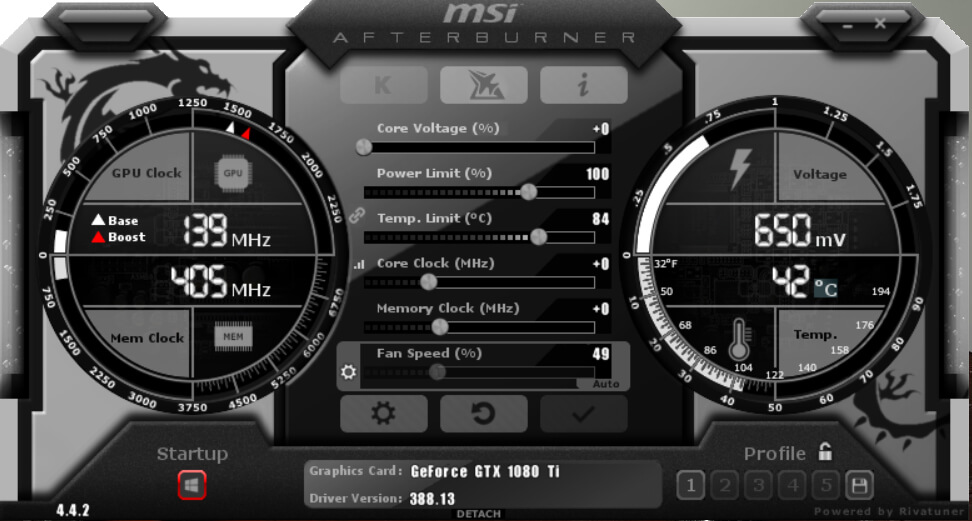
Most monitoring tools are capable of more than just controlling GPU fans and altering voltage. They also monitor temperatures, core and memory frequencies, along with GPU usage. Most of them also offer at least basic overclocking capability. This is important because your can't prevent something that you can't see.
Monitoring your GPU's temperature, along with core and memory frequencies, allows you to determine when you're experiencing throttling. It's important to note that there are a few things to look for before you need to break out the utilities. If you are experiencing stuttering or notice a visible drop in frame rate, it's likely that your video card has slowed down to shed heat. If you haven't altered your video card's fan curve and the fan is starting to sound like a jet engine, there is a good chance you've hit the throttling point. You can then confirm this with the tool of your choice.
If your temperature exceeds your graphics card's throttling point and your frequencies start to drop, you know it's time to look at your cooling. Ideally you want temperatures to be as low as possible, anything below 80 degrees is normal and should keep throttling in check. Nvidia's GTX 1080 Ti, for example, has a throttling point of 84 degrees. If you keep the temperature below 80 degrees you leave yourself with a bit of breathing room, so you can focus on having fun instead of monitoring GPU frequencies.
It's important to remember that every graphics card has a different throttling point. The previous-gen GTX 980 and 970, for example, throttle at 80 degrees, while AMD's Vega series cards can reach a maximum temperature of 85 degrees before they throttle. You will need to find out the throttling point for your specific card in order to set an effective fan curve and voltage.
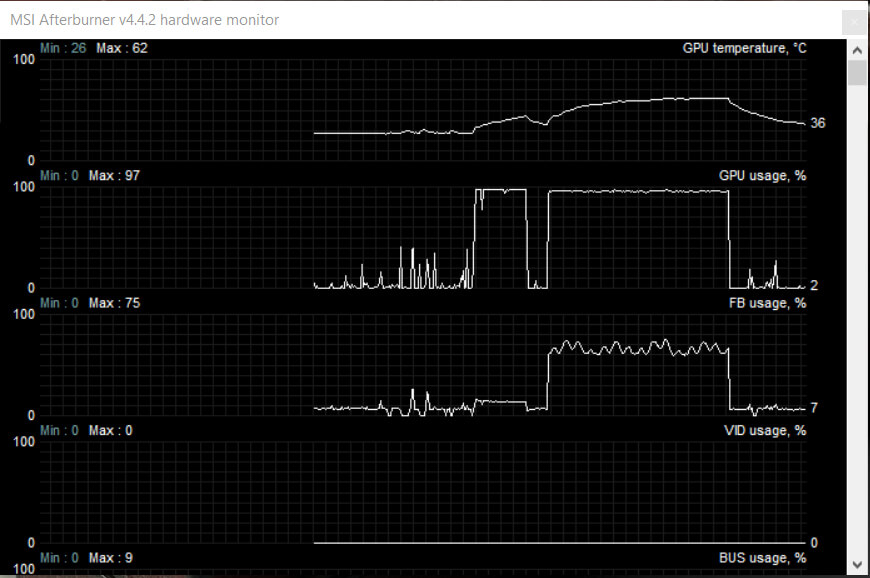
When deciding which utility to use, it's important to consider the scope of what you are going to be monitoring. If you are going to focus on your graphics card, then I recommend MSI's Afterburner or Asus Tweak. Either of these tools will provide all the monitoring and configuration options you could possibly need, including overclocking.
If you want to monitor your whole system, you'll need to look at something else, such as NZXT's Cam software. While Cam does monitor your entire system, it doesn't offer as many options for tweaking your graphics card. It doesn't hurt to install more than one utility to get a wider range of monitoring features.
 Google Pixel Buds Pro 2: $40 off at Amazon
Google Pixel Buds Pro 2: $40 off at Amazon
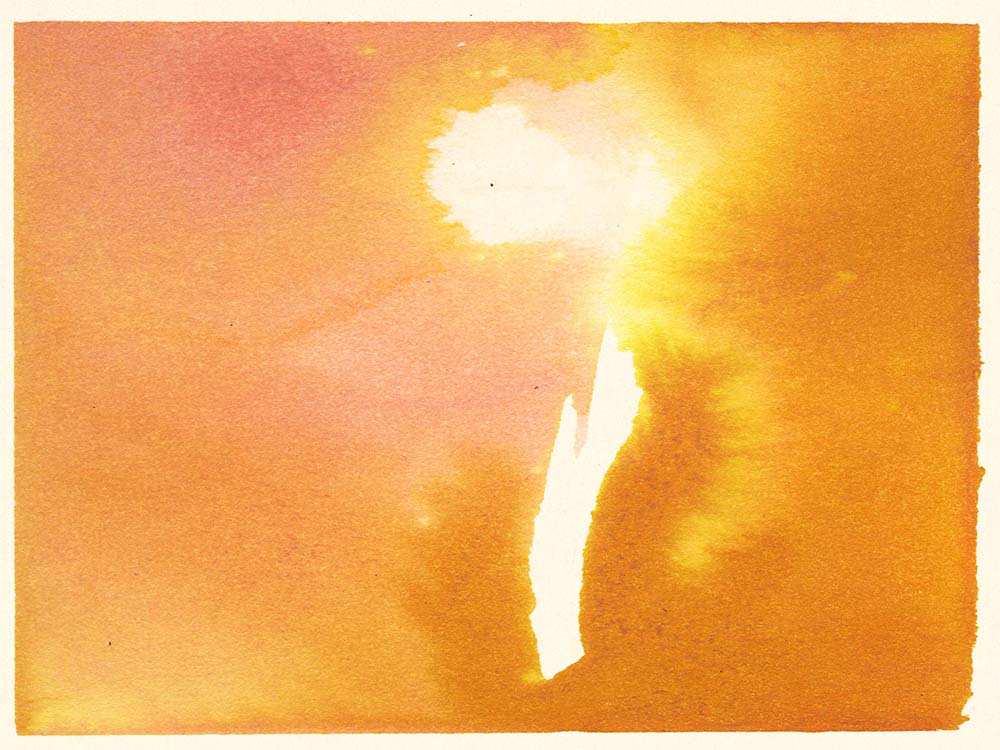 Hello, World! Part One: Eliza by Sheila Heti
Hello, World! Part One: Eliza by Sheila Heti
 Costa Rica ran almost entirely on renewable energy in 2016
Costa Rica ran almost entirely on renewable energy in 2016
 Why Tights and No Knickers? by Sophie Haigney
Why Tights and No Knickers? by Sophie Haigney
 Ireland fines TikTok $600 million for sharing user data with China
Ireland fines TikTok $600 million for sharing user data with China
 Love, Loosha by Lucia Berlin and Kenward Elmslie
Love, Loosha by Lucia Berlin and Kenward Elmslie
 Japan’s moon landing picture might be the space photo of the decade
Japan’s moon landing picture might be the space photo of the decade
 SpaceX reveals cause of September explosion
SpaceX reveals cause of September explosion
 'The Last of Us' Season 2, episode 5: The spores are here!
'The Last of Us' Season 2, episode 5: The spores are here!
 Google announced a 5
Google announced a 5
 Shop the Google Pixel Pro 9 for $200 off at Amazon
Shop the Google Pixel Pro 9 for $200 off at Amazon
 Today I Have Very Strong Feelings by Jonathan Wilson
Today I Have Very Strong Feelings by Jonathan Wilson
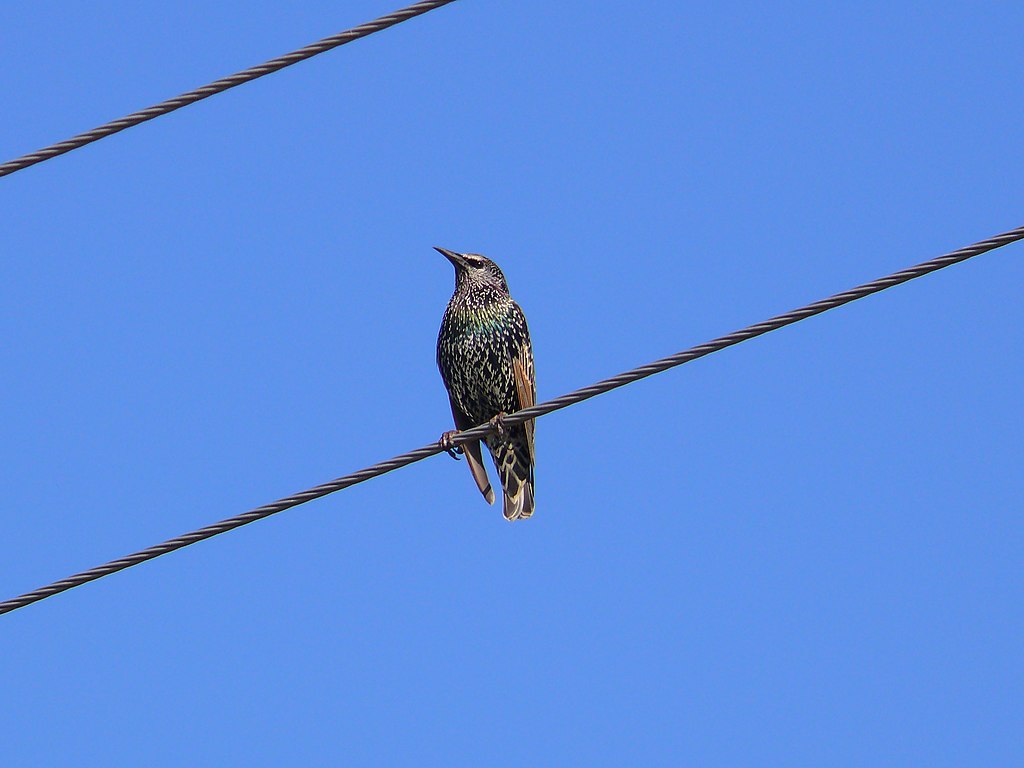 The Leap by Dan Beachy
The Leap by Dan Beachy
 Lil B Death
Lil B Death
 The Anatomy of Liberal Melancholy
The Anatomy of Liberal Melancholy
 New York Film Festival Dispatch: Cold War Movies by The Paris Review
New York Film Festival Dispatch: Cold War Movies by The Paris Review
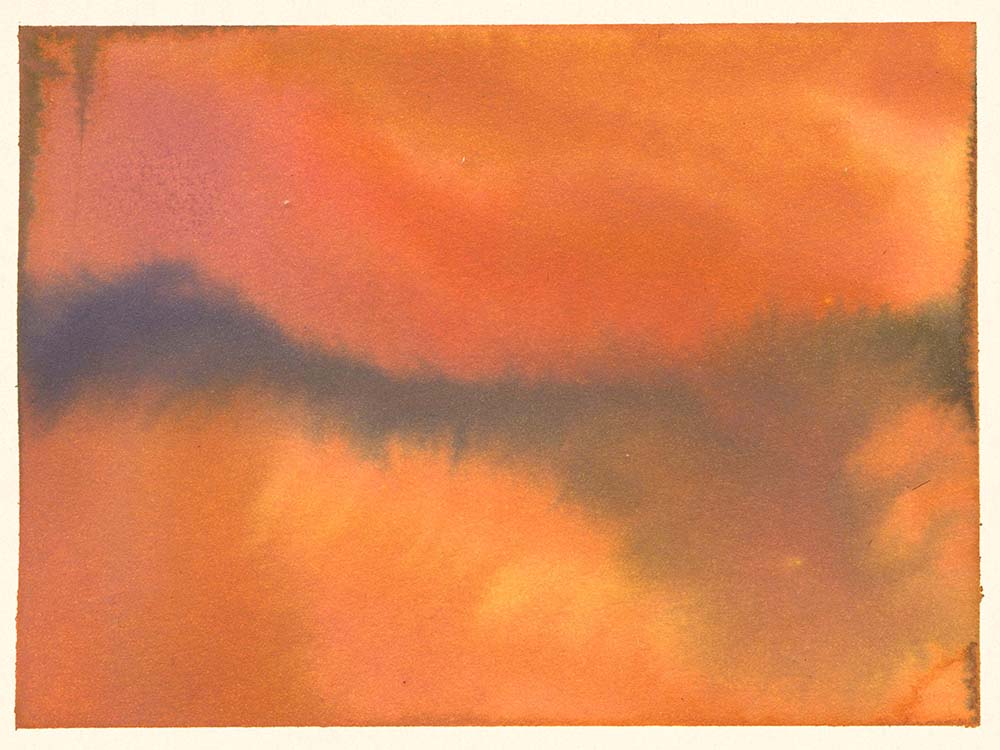 Hello, World! Part Three: Alice by Sheila Heti
Hello, World! Part Three: Alice by Sheila Heti
 Apple finally allows game streaming services on the App Store
Apple finally allows game streaming services on the App Store
 Best IPL deal: Save $80 on Braun IPL Silk·Expert
Best IPL deal: Save $80 on Braun IPL Silk·Expert
 A prominent climate scientist just won a major court battle
A prominent climate scientist just won a major court battle
Everyone is having a field day with news that Trump is skipping the Correspondents' Dinner'Pokémon' makes a fantastic console debut with 'Sword' and 'Shield'Hulu's ‘Dollface’ depicts female friendship at its most basic: ReviewNicole Kidman is a great actress and a terrible clapper and that's okayPhotos show Venice underwater after highest tide in 50 yearsAva DuVernay's Oscars dress has more meaning behind it than you thinkDonald Trump bows out of White House Correspondents dinnerMicrosoft is scaling back Android and iOS versions of the Cortana appLily Allen quits Twitter after trolls attack her over son's deathApple launches 16AirPods Pro covered in 18'The Mandalorian' episode 2 is a perfect Star Wars tone poemCoinbase Card adds 5 more cryptocurrencies and launches in 10 new countriesCoinbase Card adds 5 more cryptocurrencies and launches in 10 new countriesBarack Obama and Malia had an awesome night out in NYC and looked awesome doing itBrie Larson, like everyone else, didn't seem thrilled with Casey Affleck's Oscar winWho is this random guy Fox News had on to talk about Swedish security?Brie Larson, like everyone else, didn't seem thrilled with Casey Affleck's Oscar winWhat the type of steak you eat says about youGoogle Maps adds button to translate addresses and directions Trump discovers a whole new way to embarrass himself on Twitter Curious cat investigates plastic bag, immediately regrets it How to watch the Microsoft Build keynotes Microsoft Video Indexer can identify emotions of people in videos 'Rob & Big' star mourns Big's death: 'My heart is broken' Facebook empowers Page owners to politicize their posts Get a good look at Faraday Future's supercar in new video Microsoft goes full Minority Report with Gesture API for Windows 10 Derelict house engulfed by overgrown trees is on sale for £450,000 and it's a pretty good deal Chinese mobile payment platform Alipay enters the US market This outstanding play is already Major League Baseball's catch of the year You won't believe how fast this Microsoft plug This handbag device will help you catch snatch thieves red Tesla's latest Autopilot update records the road while you drive Want to find a date? Here's where Tinder says you should work. Gorgeous digital Mother's Day cards honor immigrant and Muslim moms The 'Avatar' sequels cast a key new character, so they must be real Kid buys used copy of 'Grand Theft Auto,' discovers meth inside Cortana will soon have a lot more skills to show off Everyone's favorite retro phone, the Nokia 3310, finally has a release date
2.2832s , 10156.5390625 kb
Copyright © 2025 Powered by 【Watch Black Panther Online】,Miracle Information Network